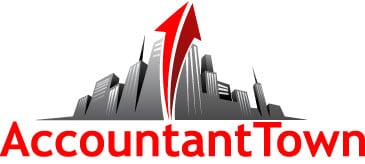The Expanded Equation
Conducting Further Analysis with an Expanded Accounting Equation
An expanded accounting equation is a means of gathering more specific detail about the owner’s equity component in a traditional accounting equation. The expanded equation is as follows: owner capital + revenue – expenses – owner’s draws. When combined with the basic accounting equation, then (assets=liabilities + equity) the result would be as follows: assets=liabilities + (owner’s capital + revenues-expenses-owner’s draws).
Stockholder’s Equity
Stockholder’s equity, as opposed to owner’s equity, is calculated a bit differently with an expanded equation than it is with a regular equation. Specifically, shareholder capital is determined by the following equation: paid-in-capital + revenue – expenses – dividends—treasury stock. This equation then replaces the equity component in an accounting equation that deals with stockholder investments.
Purpose
Using an expanded equation allows accountants and business owners to determine how net income (derived from revenue minus expenses) will impact overall equity. Additionally, it also reflects the particular effects of specific transactions in which owner or shareholder investments are involved, including interest, withdrawals, or dividends. For instance, a basic equation would ensure accounts are balanced, but an expanded equation would indicate how much of that balance was impacted by interest payments to shareholders.
Income Statement and Balance Sheet
More specifically, this extended equation highlights the particular relationship between the balance sheet and the company’s net income. By breaking down owner equity into revenue and expense components, bookkeepers can report more specific information about where that equity comes from, and what is causing it to ebb and flow. An analysis of a company’s income statement is a key goal behind use of the expanded accounting equation, as it provides a better understanding of profit trends.
Owner Draws
Another unique aspect of this particular equation is the component entitled “owner’s draws.” This refers to an owner’s ability to withdraw funds from a company, usually to pay salaries (including his or her own). This occurs most often in what is called a limited liability company, in which the owner is also the shareholder and no outside creditors are involved. In the case of stockholder equity, the draws to cover salaries take the form of dividends paid out by investors. The expanded equation highlights where and how these draws decrease overall equity.
Example
To better envision the extended accounting process, consider the following example. Jack, a business owner and sole proprietor, invests $20,000 in a company. He makes $10,000 in revenue, which he spends on company equipment. He also draws out $10,000 to cover salaries. He would then calculate his assets in the following extended equation: 10,000 (salaries paid) +20,000 (owner capital) + 10,000 (revenue) – 10,000 (expenses) – 10,000 (draws).
The expanded accounting equation aids in budget analysis and planning, and also allows potential or current investors to better see where money in a company is being allocated and how well funds are managed over time. Since all of the necessary information should be included on the detailed balance sheet, its computation only requires a close investigation of current business financial records. Be sure to check out the original equation.
Accounting made easy, for FREE!

Access the contact form and send us your feedback, questions, etc. We are always welcome to help someone out. You can also contact us if you wish to submit your writing, cartoons, jokes, etc. and we will consider posting them to share with the world! The Facebook and LinkedIn groups are also good areas to find people interested in accounting like yourself, don’t hesitate to join as everyone of all levels are welcome to become part of the community.

